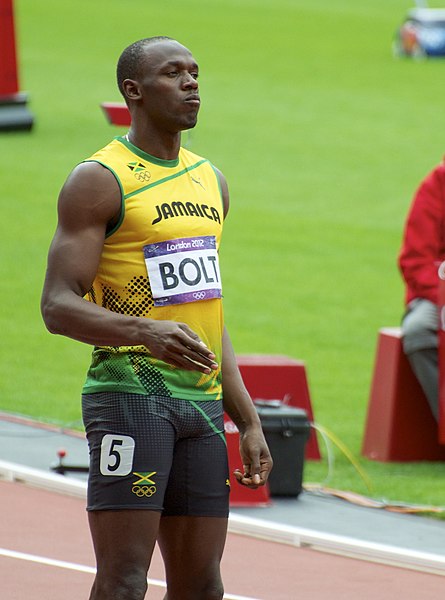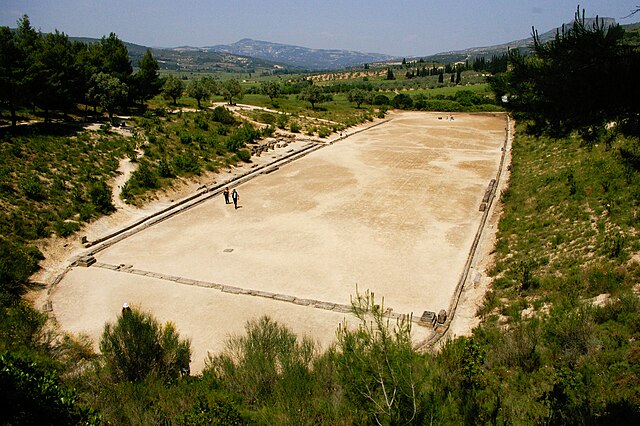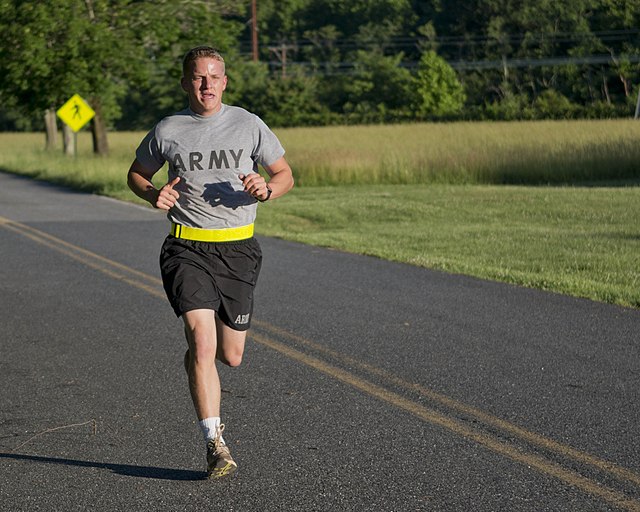Sprinting is running over a short distance at the top-most speed of the body in a limited period of time. It is used in many sports that incorporate running, typically as a way of quickly reaching a target or goal, or avoiding or catching an opponent. Human physiology dictates that a runner's near-top speed cannot be maintained for more than 30–35 seconds due to the depletion of phosphocreatine stores in muscles, and perhaps secondarily to excessive metabolic acidosis as a result of anaerobic glycolysis.
Usain Bolt, world record holder in 100 m and 200 m sprints
This sprinter's initial crouch in the blocks allowed her to preload her muscles and channel the force generated from this into her first strides.
The stadion of ancient Nemea, Greece.
Start of the women's 60 m at the 2010 World Indoor Championships
Running is a method of terrestrial locomotion by which humans and other animals move rapidly on foot. Running is a gait with an aerial phase in which all feet are above the ground. This is in contrast to walking, where one foot is always in contact with the ground, the legs are kept mostly straight, and the center of gravity vaults over the stance leg or legs in an inverted pendulum fashion. A feature of a running body from the viewpoint of spring-mass mechanics is that changes in kinetic and potential energy within a stride co-occur, with energy storage accomplished by springy tendons and passive muscle elasticity. The term "running" can refer to a variety of speeds ranging from jogging to sprinting.
Marathon runners at Carlsbad Marathon, US, 2013
Ancient Roman bronze sculptures of runners from the Villa of the Papyri at Herculaneum, now in the Naples National Archaeological Museum
Eadweard Muybridge photo sequence
A U.S. Army soldier wearing sportswear runs to maintain his fitness.








